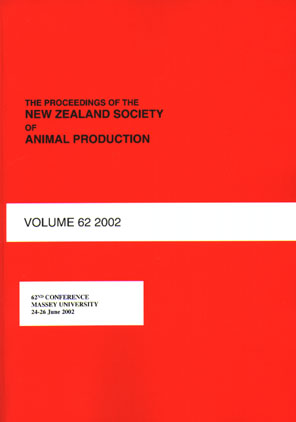Abstract
Sheep shorn with a cover-comb were compared with conventionally shorn sheep in two experiments. In the first experiment, ewe and lamb performance and some aspects of ewe physiology were measured with 60 Romney ewes which were shorn before lambing. In the second experiment, oxygen consumption by 12 Romney hoggets was measured before and after shearing in calorimeters at 10 C. In the first experiment, herbage intake by ewes in the 3 weeks post- shearing was not affected by shearing method. There were no treatment effects on the liveweight of ewes, birthweight and growth rate of lambs nor on ewe wool production during the 2 months post-shearing. However, on days 1 and 3 after shearing the plasma concentrations of non- esterified fatty acids and of 3- hydroxybutyrate were higher in the ewes shorn with the conventional comb than in those shorn with the cover comb. In the second experiment oxygen consumption was increased immediately after shearing, by 47% and 25% in the conventional- and cover-comb sheep respectively. The difference between the two groups, which remained significant until day 12 post-shearing, decreased with time until it disappeared on day 22. The results show that sheep shorn with the cover-comb were significantly more resistant to cold conditions than those shorn with the conventional comb, particularly during the 3 days post-shearing. Use of the cover comb may offer a useful low cost method of reducing the effects of cold conditions after shearing, but its effects on mortality have not been demonstrated.
Proceedings of the New Zealand Society of Animal Production, Volume 52, , 153-156, 1992
| Download Full PDF | BibTEX Citation | Endnote Citation | Search the Proceedings |

This work is licensed under a Creative Commons Attribution-NonCommercial-NoDerivatives 4.0 International License.

